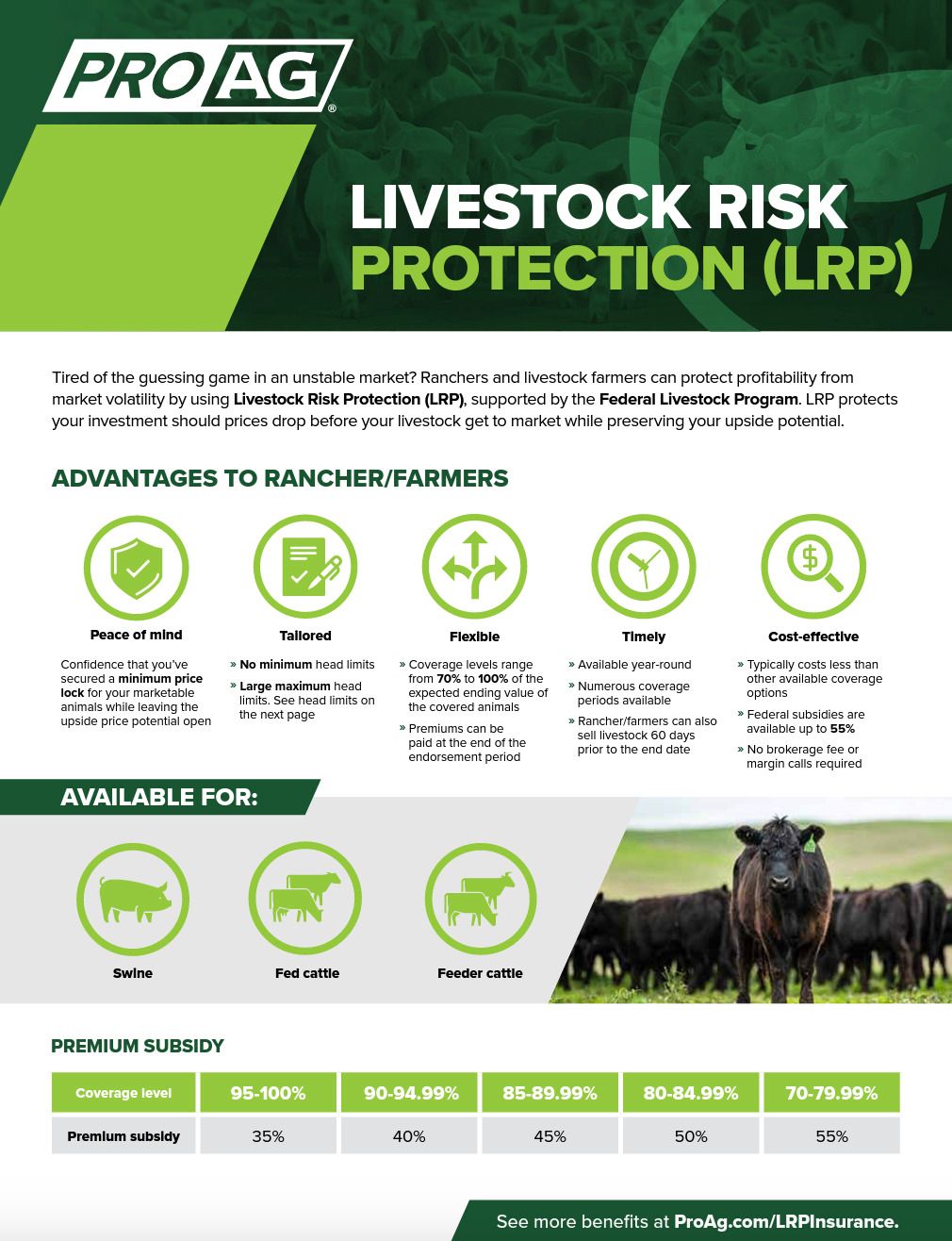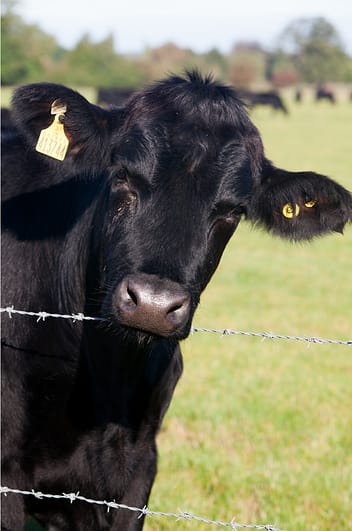Navigating Company Risks with Bagley Risk Management
Key Elements to Think About When Choosing Livestock Threat Defense (LRP) Insurance Coverage
When assessing choices for Livestock Danger Security (LRP) insurance coverage, numerous crucial factors require mindful factor to consider to ensure efficient risk management in the agricultural sector. Choosing the right insurance coverage alternatives customized to your particular livestock operation is paramount, as is understanding exactly how exceptional prices associate with the degree of protection offered.
Coverage Options
When considering Animals Risk Defense (LRP) insurance coverage, it is vital to recognize the various coverage choices available to minimize risks in the farming field. Animals Threat Protection (LRP) insurance policy offers various coverage choices customized to satisfy the diverse requirements of animals manufacturers. Bagley Risk Management. One of the main insurance coverage options is cost insurance coverage, which safeguards against a decrease in market value. Producers can select the insurance coverage degree that lines up with their cost threat monitoring goals, permitting them to safeguard their operations versus potential economic losses.
One more important insurance coverage choice is the endorsement duration, which determines the length of time the coverage holds. Producers can choose the recommendation duration that best fits their manufacturing cycle and market conditions. In addition, protection degrees and rates vary based on the sort of livestock being guaranteed, giving producers the flexibility to tailor their insurance policy plans according to their certain needs.
Recognizing the various insurance coverage options offered under Livestock Risk Protection (LRP) insurance policy is vital for producers to make enlightened decisions that successfully secure their livestock procedures from market uncertainties.
Premium Expenses

Livestock Danger Protection (LRP) insurance coverage gives necessary protection choices tailored to minimize threats in the agricultural sector, with a substantial facet to consider being the computation and framework of premium prices. When establishing premium prices for LRP insurance policy, a number of elements come right into play. These consist of the kind and number of livestock being insured, the coverage level picked, the current market prices, historic cost data, and the size of the insurance coverage period. Insurance firms might also consider the area of the ranch, as geographic factors can affect the general danger account.
Insurance companies assess historic information on livestock prices and manufacturing costs to establish an ideal premium that shows the level of danger entailed. It is vital for animals manufacturers to thoroughly assess premium prices and coverage alternatives to ensure they are effectively protected against prospective financial losses due to adverse market problems or unexpected occasions.
Eligible Animals
The decision of qualified animals for Livestock Danger Protection (LRP) insurance protection entails careful factor to consider of particular standards and attributes. Animals types that are commonly eligible for LRP insurance policy consist of feeder cattle, fed cattle, swine, and lambs. These animals have to satisfy particular credentials connected to weight ranges, age, and meant usage. Furthermore, the qualification of animals may differ based upon the details insurance copyright and the regards to the policy.
Feeder livestock, as an example, are generally qualified for LRP protection if they drop within specified weight ranges. Fed livestock might likewise be qualified, but they must satisfy certain weight and quality grade requirements. Swine eligible for protection normally consist of market weight pets intended for slaughter. Lambs are one more group of animals that can be considered for LRP insurance coverage, with elements such as weight and age my sources playing an essential function in identifying their qualification.
Prior to picking LRP insurance for animals, producers need to carefully evaluate the eligibility standards laid out by the insurance supplier to ensure their animals meet the necessary requirements for protection.
Plan Adaptability
Policy adaptability in Animals Risk Protection (LRP) insurance allows producers to customize insurance coverage to fit their particular requirements and take the chance of management techniques. This flexibility encourages animals manufacturers to personalize their insurance plan based on aspects such as the kind of animals they have, market problems, and individual threat resistance levels. One crucial element of plan adaptability in LRP insurance is the ability to choose coverage levels that line up with the manufacturer's monetary goals and run the risk of exposure. Producers can pick insurance coverage degrees that secure them against potential losses due to fluctuations in animals costs, ensuring they are adequately guaranteed without paying too much for unnecessary coverage. In addition, LRP insurance policy uses versatility in policy period, enabling producers to select insurance coverage durations that best fit their production cycles and marketing timelines. By supplying adjustable options, LRP insurance makes it possible for producers check my blog to efficiently handle their risk direct exposure while securing their livestock procedures versus unexpected market volatility.
Insurance Claims Refine
Upon experiencing a loss or damage, producers can launch the insurance claims procedure for their Animals Danger Security (LRP) insurance coverage by promptly calling their insurance policy copyright. It is vital for manufacturers to report the loss immediately to speed up the cases procedure. When connecting to the insurance coverage company, producers will need to Full Article offer detailed information about the case, including the date, nature of the loss, and any type of pertinent documents such as veterinary records or market prices.

After the analysis is total, the insurance policy company will certainly make a decision regarding the insurance claim and connect the outcome to the manufacturer. If the claim is authorized, the manufacturer will get settlement according to the terms of their Livestock Threat Protection (LRP) insurance plan. Bagley Risk Management. It is important for manufacturers to be acquainted with the insurance claims process to make certain a smooth experience in case of a loss

Final Thought
Finally, when choosing Livestock Danger Security (LRP) insurance coverage, it is necessary to consider protection choices, premium expenses, eligible livestock, policy versatility, and the insurance claims procedure. These vital factors will certainly aid make certain that herdsmans and farmers are appropriately protected against potential risks and losses connected with their animals procedures. Making an educated choice based on these considerations can ultimately bring about far better economic protection and satisfaction for livestock producers.
Animals Threat Defense (LRP) insurance coverage provides different insurance coverage alternatives tailored to meet the varied demands of livestock producers.The determination of eligible animals for Livestock Danger Protection (LRP) insurance policy protection includes careful factor to consider of certain criteria and qualities.Policy adaptability in Livestock Risk Protection (LRP) insurance policy allows manufacturers to tailor insurance coverage to suit their details needs and risk management approaches.Upon experiencing a loss or damage, manufacturers can start the cases procedure for their Livestock Threat Protection (LRP) insurance policy by promptly calling their insurance policy supplier.In conclusion, when choosing Animals Risk Security (LRP) insurance policy, it is essential to think about insurance coverage options, premium expenses, qualified livestock, policy versatility, and the cases procedure.